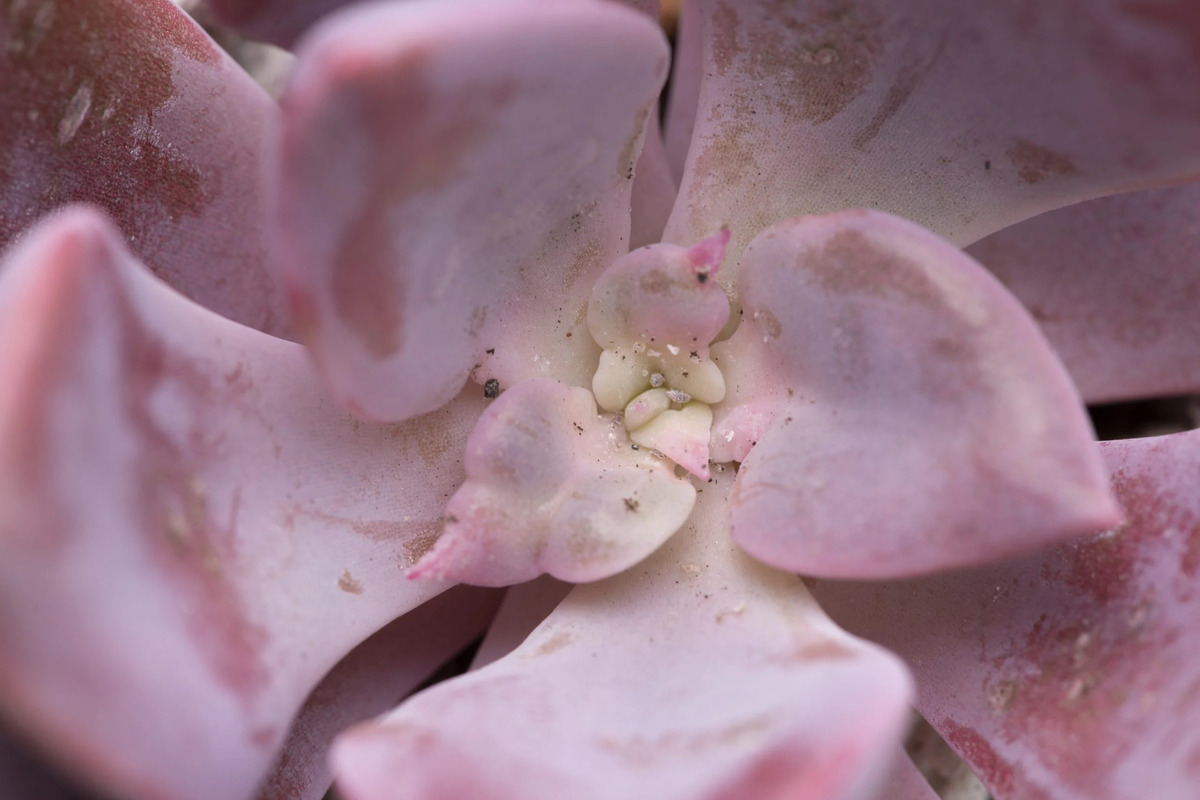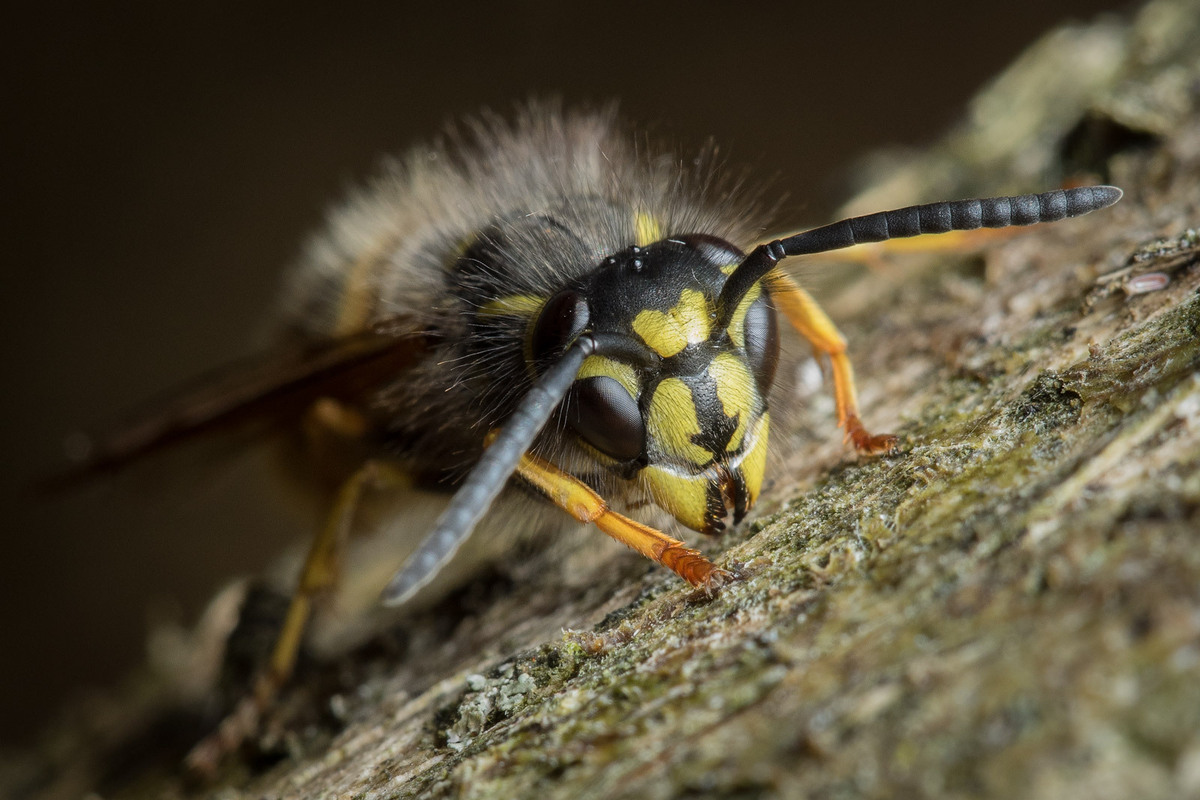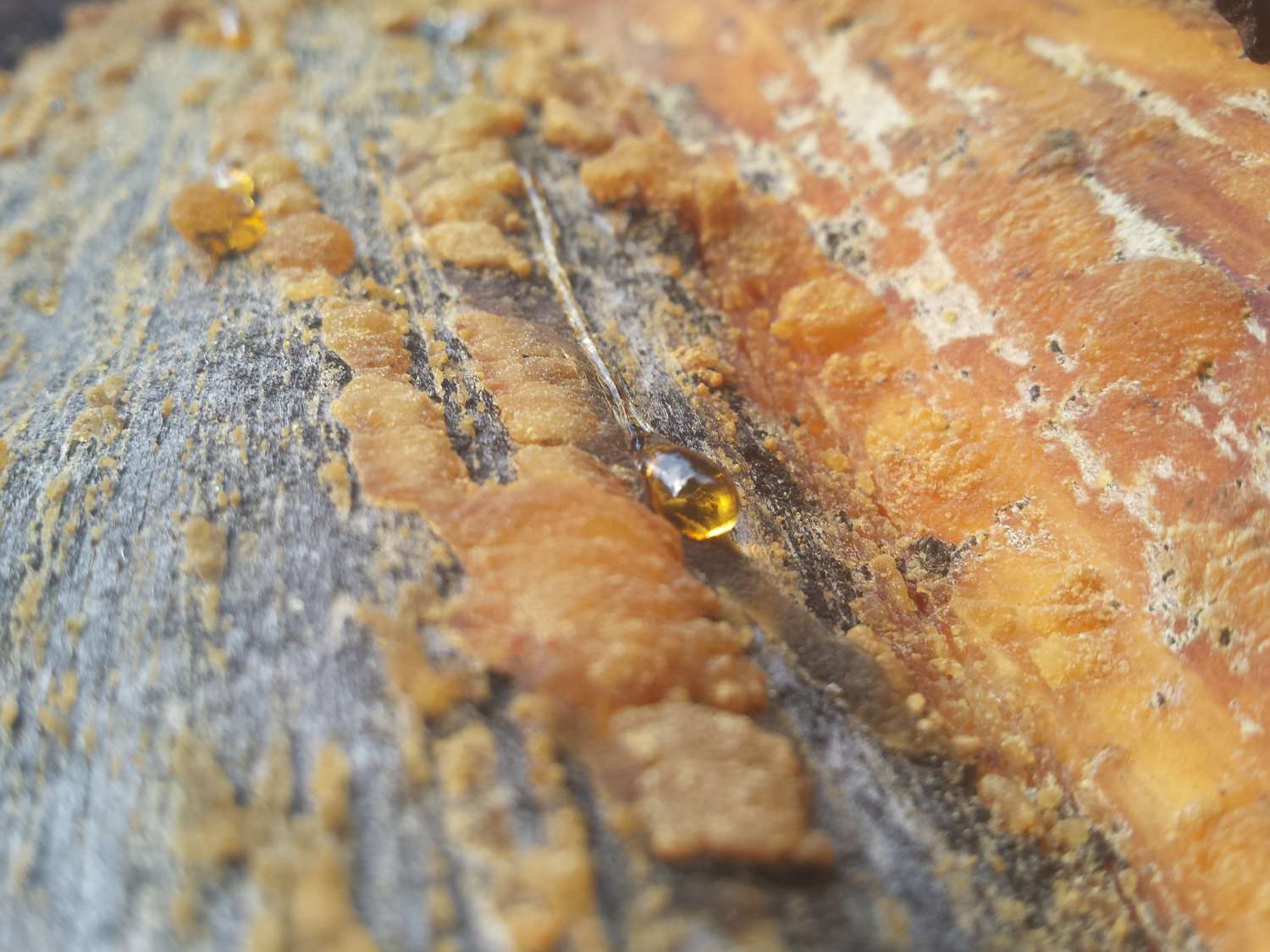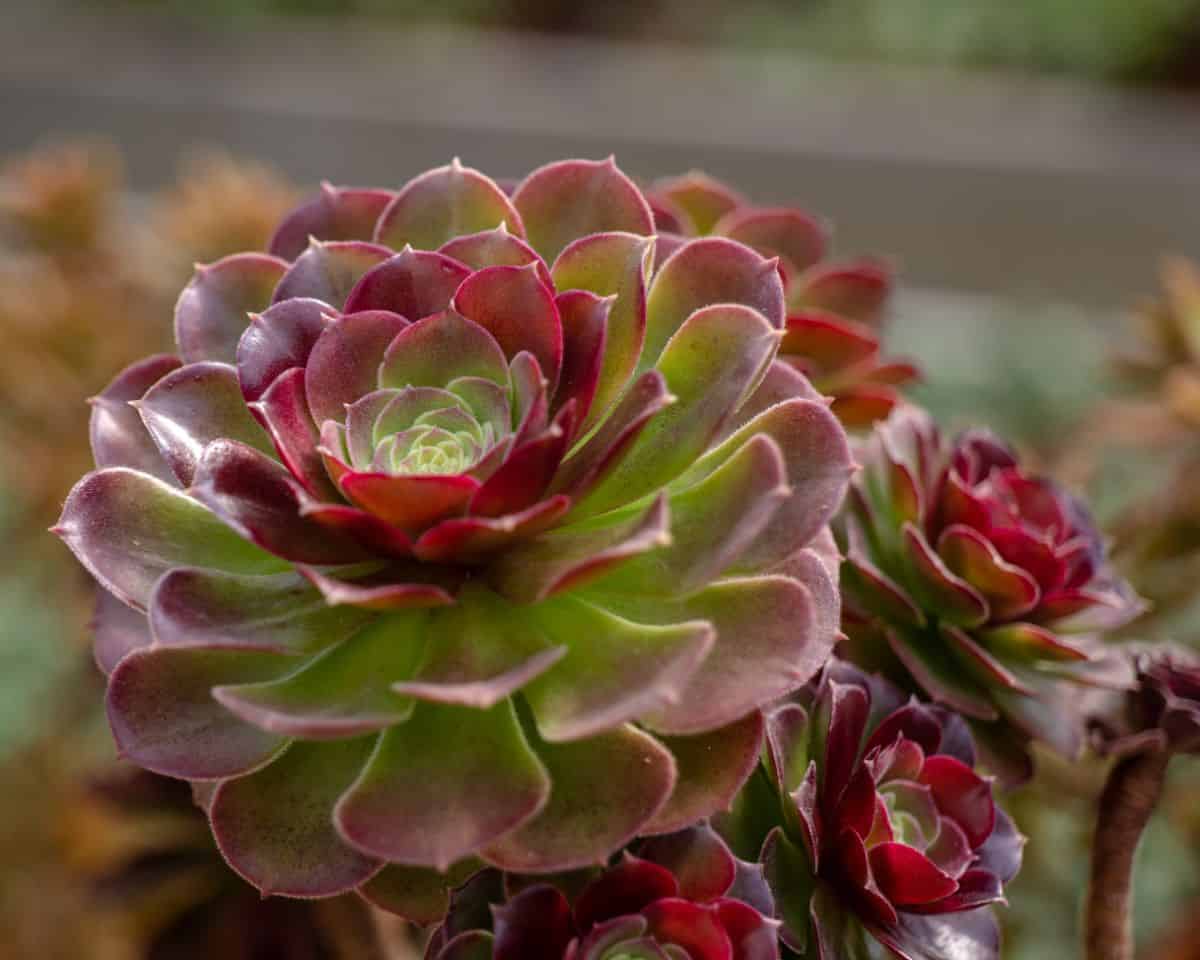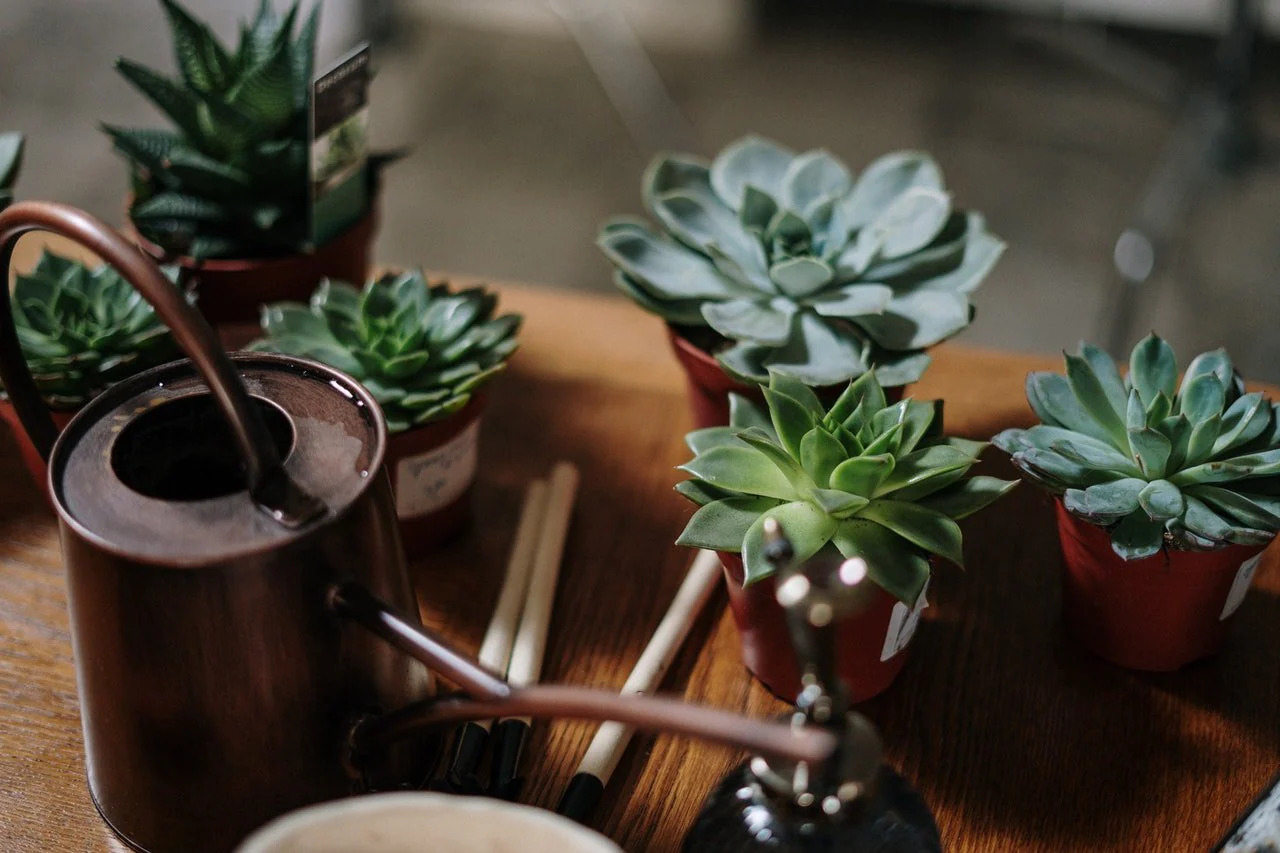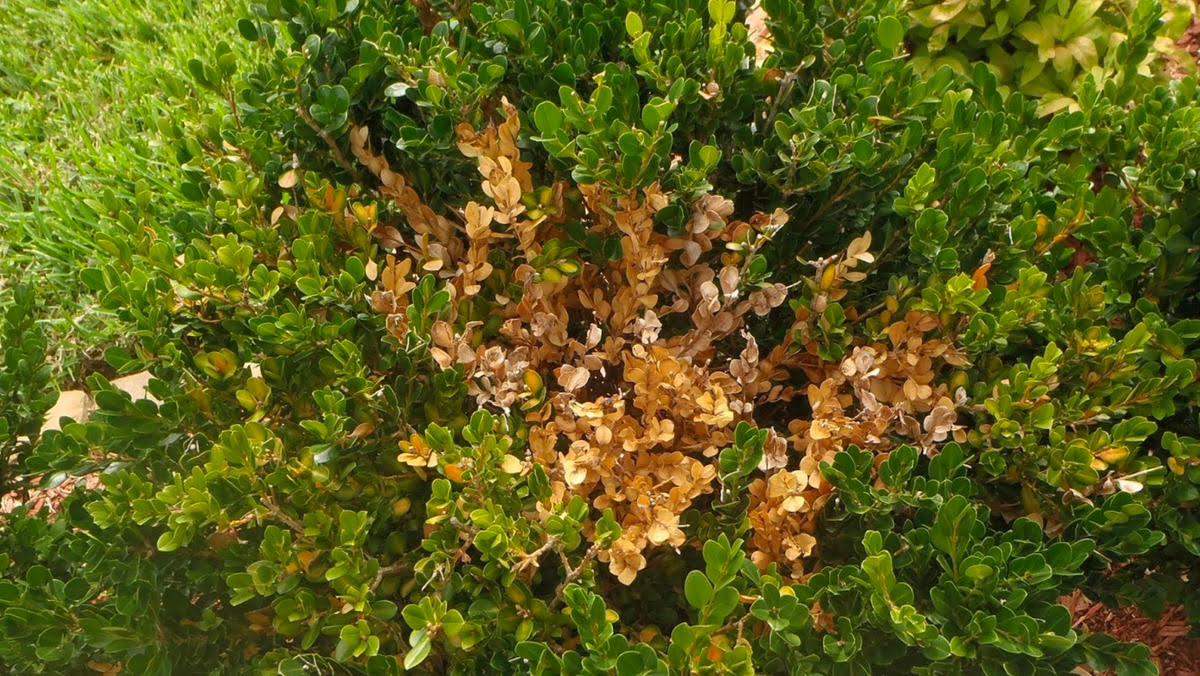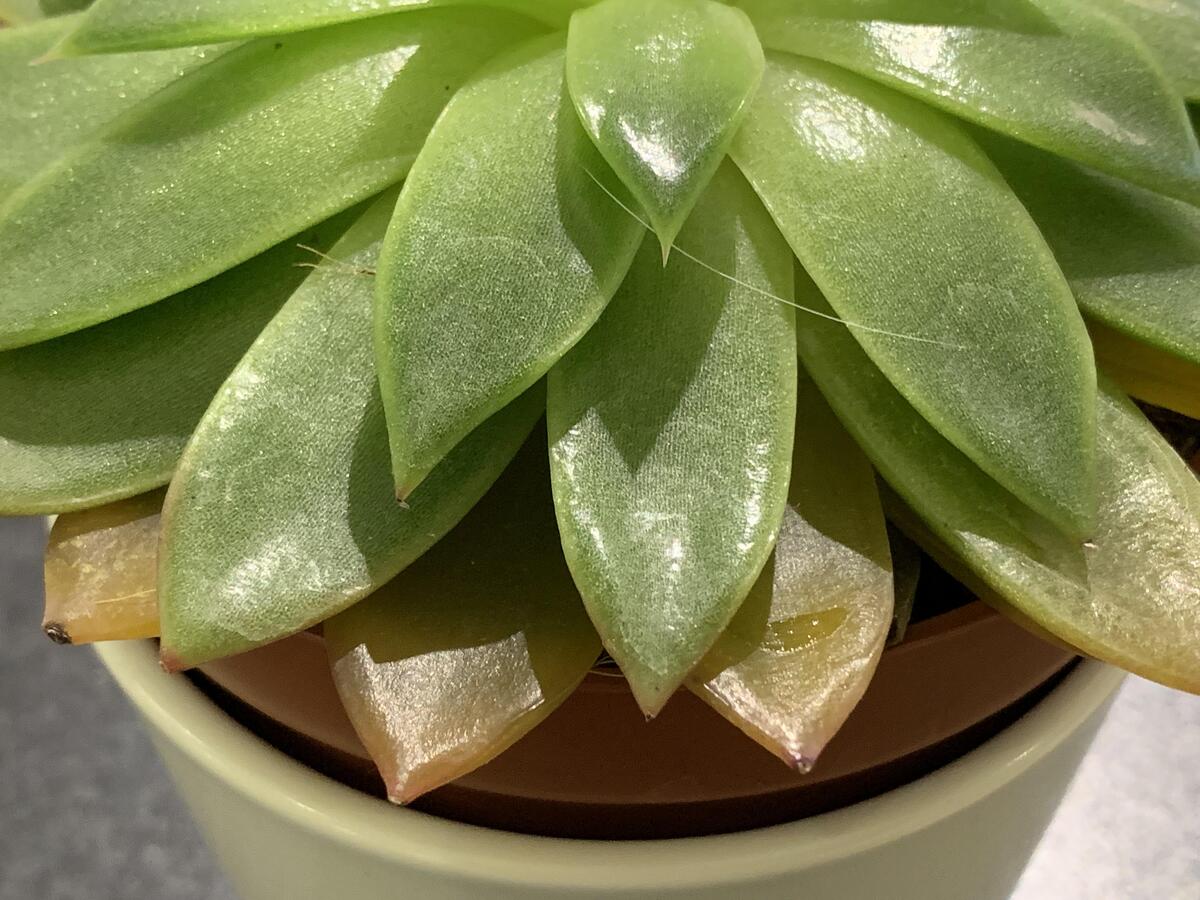Home>Types of Gardening>Ornamental Gardening>Why Do My Succulents Have Brown Spots
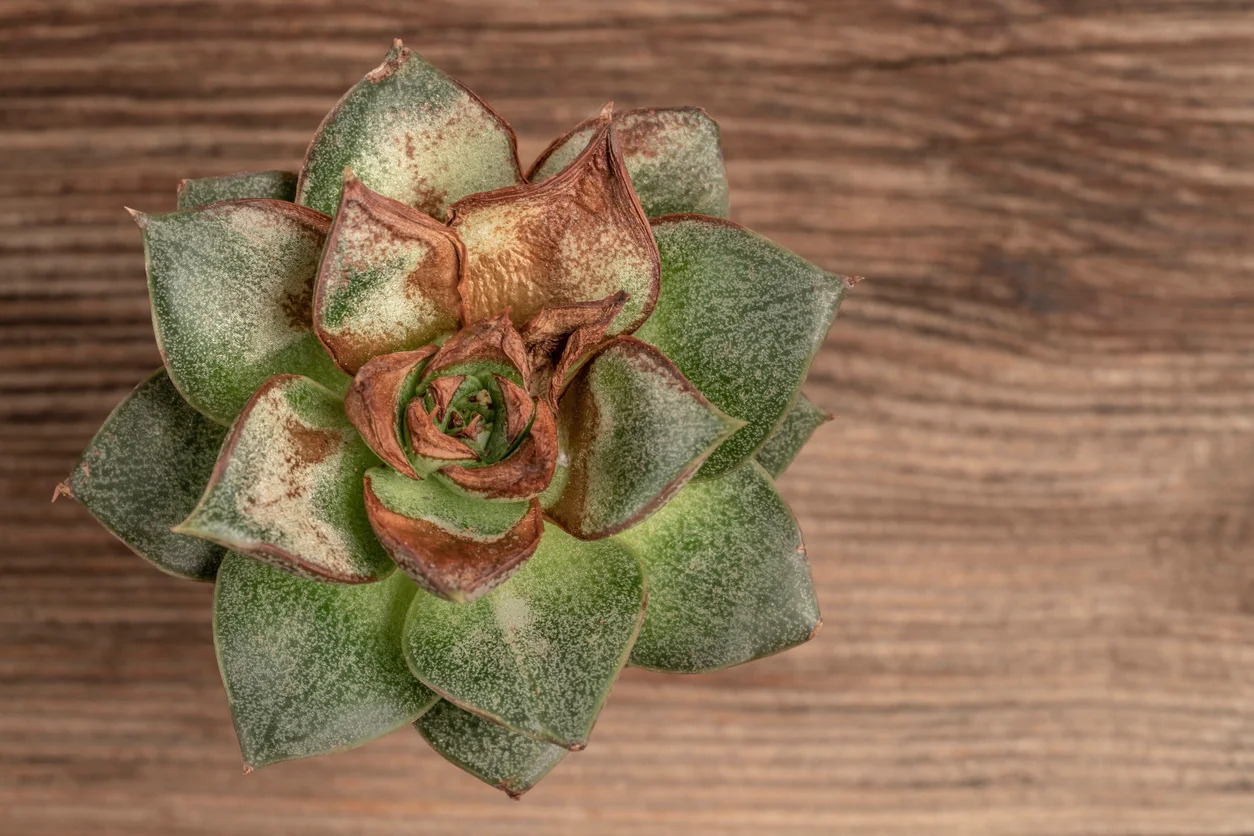

Ornamental Gardening
Why Do My Succulents Have Brown Spots
Published: December 28, 2023
Discover the causes of brown spots on your succulents and get expert tips for maintaining healthy ornamental gardens. Learn how to address common issues and keep your plants thriving.
(Many of the links in this article redirect to a specific reviewed product. Your purchase of these products through affiliate links helps to generate commission for Chicagolandgardening.com, at no extra cost. Learn more)
Table of Contents
**
Introduction
**
Succulents, with their striking appearance and low-maintenance nature, have gained immense popularity among gardening enthusiasts. These resilient plants are known for their ability to thrive in arid conditions, making them a favorite choice for both indoor and outdoor settings. However, despite their hardy nature, succulents are not immune to issues that can affect their aesthetic appeal and overall health. One common concern that many succulent owners encounter is the development of unsightly brown spots on their plants.
The emergence of brown spots on succulents can be a cause for alarm, prompting owners to seek solutions to restore their plants' vitality and beauty. Understanding the underlying causes of these brown spots is crucial in addressing the issue effectively. By delving into the potential reasons behind this phenomenon, succulent enthusiasts can equip themselves with the knowledge needed to prevent, identify, and remedy the problem.
In the sections that follow, we will explore the intricate world of succulents, shedding light on their unique characteristics and the factors that contribute to the appearance of brown spots. By gaining insight into the common causes of this issue, including overwatering, underwatering, sunburn, pests, and diseases, succulent enthusiasts can take proactive measures to safeguard their beloved plants. Furthermore, we will delve into practical remedies and preventive strategies, empowering readers to nurture thriving succulents and preserve their natural allure.
Join us on this enlightening journey as we unravel the mystery of brown spots on succulents, arming you with the knowledge and expertise needed to cultivate flourishing and vibrant succulent specimens.
Understanding Succulents
Before delving into the specific factors contributing to the development of brown spots on succulents, it is essential to grasp the fundamental characteristics of these remarkable plants. Succulents belong to a diverse group of species, each boasting unique traits that enable them to thrive in arid environments.
One of the defining features of succulents is their ability to store water in specialized structures, such as their leaves, stems, or roots. This adaptation allows succulents to survive prolonged periods of drought, making them well-suited for regions with minimal rainfall. The presence of these water-storing tissues gives succulents their distinct appearance, often characterized by plump, fleshy leaves and a compact growth habit.
Furthermore, succulents exhibit a remarkable range of shapes, sizes, and textures, captivating enthusiasts with their diversity. From the iconic rosettes of Echeveria to the architectural elegance of Sansevieria, succulents offer an array of visually appealing forms that add a touch of natural artistry to any setting.
In addition to their water-retentive adaptations, succulents have evolved mechanisms to minimize water loss, such as specialized pores that open at night to reduce transpiration. These remarkable survival strategies enable succulents to thrive in environments where other plants would struggle to survive.
By understanding the unique adaptations and characteristics of succulents, enthusiasts can gain a deeper appreciation for these resilient plants. This knowledge also lays the foundation for identifying the specific challenges that succulents may face, including the development of brown spots, and devising effective strategies to address them.
Common Causes of Brown Spots
When brown spots mar the pristine beauty of succulents, it is essential to investigate the potential culprits behind this phenomenon. Several factors can contribute to the development of brown spots on succulents, ranging from environmental stressors to pest infestations. By familiarizing ourselves with these common causes, we can effectively diagnose and address the issue, restoring our succulents to their vibrant glory.
One prevalent cause of brown spots on succulents is overwatering. Despite their water-storing abilities, succulents are susceptible to damage when subjected to excessive moisture. When the soil remains consistently damp, the roots may become waterlogged, leading to rot and subsequent development of brown spots on the leaves. Additionally, overwatering can create an ideal environment for fungal growth, further compromising the plant’s health.
Conversely, underwatering can also result in the formation of brown spots on succulents. In their natural habitat, succulents endure periods of drought by tapping into their water reserves. However, prolonged water deprivation can cause the leaves to desiccate and develop unsightly blemishes, signaling the plant’s distress.
Another potential culprit behind brown spots is sunburn. While succulents thrive in bright light, prolonged exposure to intense sunlight, especially during the peak of summer, can scorch their leaves, leading to the appearance of brown or discolored patches. This is particularly common in species that are accustomed to partial shade or those acclimated to milder climates.
Furthermore, succulents may fall victim to various pests and diseases that manifest as brown spots on their foliage. Infestations by pests such as spider mites, mealybugs, or scale insects can cause localized damage, resulting in the discoloration of the affected areas. Additionally, fungal and bacterial infections can lead to the formation of brown spots, signaling an underlying health issue that requires prompt attention.
By recognizing these common causes of brown spots on succulents, we can take proactive measures to mitigate the risk and address any existing concerns. In the subsequent sections, we will delve into specific remedies and preventive strategies tailored to each underlying cause, empowering succulent enthusiasts to nurture thriving and immaculate plants.
Overwatering
Overwatering is a pervasive issue that can detrimentally impact the health and appearance of succulents, often manifesting as the development of unsightly brown spots on their leaves. Despite their water-storing adaptations, succulents are not immune to the perils of excessive moisture, making it crucial for enthusiasts to understand the ramifications of overwatering and implement measures to prevent and address this common concern.
When succulents are overwatered, their roots may become inundated with moisture, leading to root rot, a serious condition that compromises the plant’s ability to absorb nutrients and water. As a result, the affected succulent may exhibit symptoms of distress, including wilting, yellowing, and the formation of brown spots on its leaves. These brown spots often signal the onset of tissue decay, highlighting the urgent need for intervention.
Furthermore, overwatering creates an environment conducive to fungal proliferation, adding another layer of complexity to the issue. Fungal pathogens thrive in damp conditions, and their presence can exacerbate the damage inflicted upon the succulent, hastening the spread of brown spots and compromising its overall vigor.
To address the effects of overwatering and mitigate the development of brown spots, it is imperative to adjust the watering practices for succulents. Enthusiasts should adhere to a well-structured watering regimen, allowing the soil to dry out completely between watering sessions. This approach mimics the natural cycles of wet and dry periods that succulents experience in their native habitats, promoting healthy root development and minimizing the risk of overwatering-related issues.
If overwatering has already taken its toll on the succulent, proactive measures must be taken to salvage its health. This may involve carefully inspecting the roots for signs of rot, trimming affected areas, and repotting the plant in well-draining soil to facilitate recovery. Additionally, withholding water until the soil has thoroughly dried out can help alleviate the stress on the succulent and prevent further deterioration.
By acknowledging the detrimental effects of overwatering and implementing mindful watering practices, succulent enthusiasts can safeguard their plants from the perils of excessive moisture, preserving their vitality and beauty.
Underwatering
While succulents are renowned for their ability to withstand drought conditions, prolonged periods of water deprivation can lead to a distinct set of challenges, including the development of brown spots on their leaves. Underwatering, often stemming from irregular or insufficient watering practices, can instigate physiological changes in succulents, signaling their distress through visible symptoms such as desiccation and browning.
When succulents are underwatered, they rely on their water reserves to sustain essential physiological processes, leading to the gradual depletion of moisture stored in their leaves and stems. As a result, the affected succulent may exhibit signs of desiccation, with its leaves appearing shriveled, wilted, or discolored, often accompanied by the emergence of brown spots that denote tissue damage.
Furthermore, the absence of adequate moisture can disrupt the metabolic functions of the succulent, impeding its ability to photosynthesize and transport vital nutrients. This physiological stress can manifest as the development of brown spots, serving as a visual indicator of the plant’s struggle to cope with water scarcity.
To address the effects of underwatering and prevent the formation of brown spots, succulent enthusiasts should prioritize establishing a consistent and balanced watering routine. This entails monitoring the moisture levels in the soil and providing adequate hydration when the top layer has dried out completely. By adhering to a regular watering schedule that accommodates the succulent’s specific needs, enthusiasts can mitigate the risk of underwatering-related issues and promote the plant’s well-being.
If a succulent exhibits signs of dehydration and the formation of brown spots due to underwatering, prompt intervention is crucial to facilitate its recovery. Gradually increasing the frequency of watering and ensuring thorough hydration without causing waterlogging can help rejuvenate the succulent and prevent further deterioration. Additionally, providing a suitable growing medium with excellent drainage properties can aid in maintaining optimal soil moisture levels, supporting the succulent’s resilience against the perils of underwatering.
By recognizing the implications of underwatering and implementing proactive measures to address this concern, succulent enthusiasts can nurture thriving plants, free from the distress of water scarcity and the unsightly blemishes it may induce.
Sunburn
While succulents are renowned for their affinity for sunlight, prolonged exposure to intense rays can result in sunburn, a condition that manifests as the development of brown spots or patches on the leaves. Sunburn in succulents is particularly prevalent during the peak of summer or when the plants are abruptly exposed to high levels of direct sunlight, especially if they have been acclimated to shaded or partially shaded environments.
When succulents are subjected to excessive sunlight, their leaves may undergo photodamage, leading to the formation of brown or discolored spots. This occurs when the intense UV radiation overwhelms the plant’s natural photoprotective mechanisms, causing cellular damage and the subsequent browning of affected areas.
Furthermore, the impact of sunburn extends beyond cosmetic blemishes, as it can compromise the physiological functions of the succulent, hindering its ability to photosynthesize and sustain optimal growth. The development of brown spots serves as a visible indicator of the plant’s struggle to cope with the stress induced by excessive sunlight, prompting the need for remedial measures.
To shield succulents from the perils of sunburn and mitigate the formation of brown spots, strategic placement and gradual acclimatization to sunlight are essential. When introducing succulents to brighter conditions, gradual exposure to increasing levels of sunlight can help them acclimate and develop natural defenses against photodamage. This can be achieved by initially placing the succulents in partially shaded areas and gradually transitioning them to sunnier locations over time.
Additionally, providing protective shading during the hottest part of the day, especially in regions with scorching summers, can shield succulents from excessive UV exposure. This can be accomplished using shade cloth, sheer curtains, or strategically positioning the plants under partial cover, ensuring they receive the optimal balance of light without succumbing to the detrimental effects of intense sunlight.
If a succulent exhibits signs of sunburn and the formation of brown spots, relocating it to a shadier environment can offer relief and prevent further photodamage. With time and attentive care, the affected leaves may recover, and the succulent can resume its growth without the visual reminders of sunburn.
By understanding the implications of sunburn and implementing preventive strategies, succulent enthusiasts can safeguard their plants from the adverse effects of excessive sunlight, preserving their vitality and pristine appearance.
Pests and Diseases
Succulents, despite their resilience, are susceptible to infestations by pests and infections by fungal or bacterial pathogens, which can manifest as the development of brown spots on their leaves. Pests such as spider mites, mealybugs, and scale insects can inflict localized damage, leading to discoloration and the formation of brown spots as they feed on the succulent’s foliage. Additionally, these pests can compromise the plant’s overall health, necessitating prompt intervention to prevent further infestation and mitigate the associated damage.
Furthermore, succulents may fall victim to fungal or bacterial infections, which can cause tissue necrosis and the emergence of brown spots on their leaves. Factors such as excessive moisture, poor air circulation, and compromised plant vigor can create favorable conditions for the proliferation of these pathogens, heightening the risk of infection and subsequent tissue damage.
To address pest infestations and prevent the development of brown spots, vigilant monitoring and proactive pest management are crucial. Regular inspections of succulents can help detect early signs of infestation, enabling prompt treatment to curtail the spread of pests and minimize the damage they inflict. This may involve the targeted application of horticultural oils, insecticidal soaps, or natural predators to mitigate pest populations and safeguard the succulents from further harm.
In the case of fungal or bacterial infections, implementing cultural practices that promote optimal growing conditions can fortify succulents against these pathogens. Practices such as providing adequate air circulation, avoiding overhead watering, and maintaining proper spacing between plants can reduce the risk of infection and mitigate the development of brown spots caused by these diseases.
If a succulent exhibits signs of pest infestation or disease-related brown spots, prompt intervention is essential to prevent the issue from escalating. This may involve the targeted removal of affected foliage, the application of appropriate treatments, and the adjustment of growing conditions to create an inhospitable environment for pests and pathogens.
By recognizing the threat posed by pests and diseases and implementing proactive measures to address these challenges, succulent enthusiasts can nurture thriving plants, free from the distress of infestations and the unsightly blemishes they may induce.
Remedies and Prevention
Addressing the underlying causes of brown spots on succulents necessitates a multifaceted approach that encompasses targeted remedies and proactive prevention strategies. By understanding the specific factors contributing to the development of brown spots, succulent enthusiasts can implement tailored measures to restore the plants’ vitality and minimize the risk of recurrence.
For succulents affected by overwatering-induced brown spots, remedial actions may include carefully assessing the plant’s root health, trimming affected areas, and repotting it in well-draining soil to facilitate recovery. Adjusting the watering regimen to allow the soil to dry out completely between watering sessions can prevent the reemergence of overwatering-related issues, preserving the succulent’s well-being.
Similarly, addressing underwatering-related brown spots may involve gradually increasing the frequency of watering, ensuring thorough hydration without causing waterlogging, and providing a suitable growing medium with excellent drainage properties. By adhering to a consistent watering schedule that accommodates the succulent’s specific needs, enthusiasts can mitigate the risk of dehydration-related blemishes and promote the plant’s resilience.
To alleviate the effects of sunburn and prevent the formation of brown spots, strategic placement and gradual acclimatization to sunlight are essential. Shielding succulents from excessive UV exposure by providing protective shading during the hottest part of the day can safeguard them from photodamage, preserving their pristine appearance and physiological vigor.
In the case of pest infestations and diseases, vigilant monitoring, prompt intervention, and proactive pest management are paramount. Regular inspections of succulents can help detect early signs of infestation or infection, enabling targeted treatments to mitigate the spread of pests and pathogens. Additionally, implementing cultural practices that promote optimal growing conditions can fortify succulents against these challenges, minimizing the risk of brown spot development.
Preventive measures, such as providing adequate air circulation, avoiding overwatering, and maintaining optimal growing conditions, can collectively contribute to the succulents’ resilience against the factors that precipitate brown spots. By fostering a nurturing environment that aligns with the plants’ natural requirements, succulent enthusiasts can proactively safeguard their beloved specimens from the perils of environmental stressors and biological threats.
By embracing a holistic approach that combines targeted remedies and proactive prevention, succulent enthusiasts can cultivate thriving plants adorned with vibrant, unblemished foliage, ensuring that their natural allure remains undiminished.
Conclusion
The journey into the realm of succulents and the enigma of brown spots has unveiled a tapestry of insights, empowering enthusiasts to navigate the complexities of succulent care with confidence and expertise. As we ventured through the intricacies of succulent physiology and the diverse array of factors contributing to the emergence of brown spots, a profound understanding emerged, illuminating the path to effective diagnosis, intervention, and prevention.
From the perils of overwatering and underwatering to the nuances of sunburn and the threats posed by pests and diseases, we unraveled the multifaceted challenges that can compromise the pristine beauty and vitality of succulents. Armed with this knowledge, succulent enthusiasts are poised to take proactive measures to safeguard their beloved plants, nurturing thriving specimens adorned with immaculate foliage.
The remedies and preventive strategies presented offer a comprehensive toolkit for addressing brown spots on succulents, tailored to the specific underlying causes. By embracing a holistic approach that encompasses mindful watering practices, strategic sunlight exposure, vigilant pest management, and proactive disease prevention, succulent enthusiasts can cultivate an environment that fosters the plants’ resilience and natural allure.
As we conclude this enlightening exploration, it is evident that the allure of succulents lies not only in their captivating beauty but also in their remarkable adaptability and the symbiotic connection they forge with their caretakers. The journey of nurturing succulents transcends the confines of horticulture, evolving into a harmonious partnership that celebrates the resilience and natural artistry of these exceptional plants.
With a deeper understanding of succulents and the factors influencing the development of brown spots, enthusiasts are poised to embark on a journey of cultivation that harmonizes with the innate rhythms of these remarkable plants. By tending to their succulents with mindfulness, knowledge, and a touch of artistry, enthusiasts can ensure that these captivating specimens flourish, their leaves adorned with vibrant hues and free from the unsightly blemishes of brown spots.
As we bid adieu to this exploration, let us carry forth the wisdom gleaned, nurturing our succulents with reverence and insight, savoring the ever-unfolding beauty of these resilient companions in the natural tapestry of our lives.
